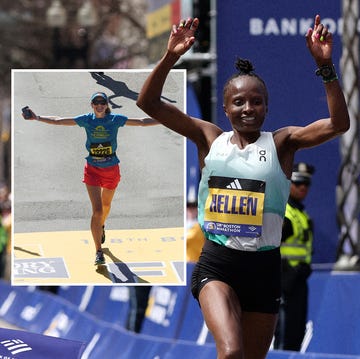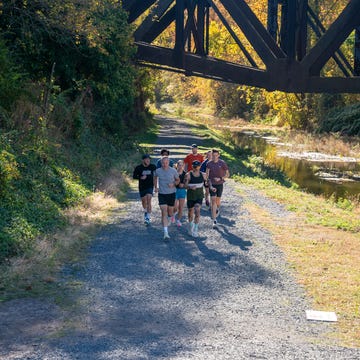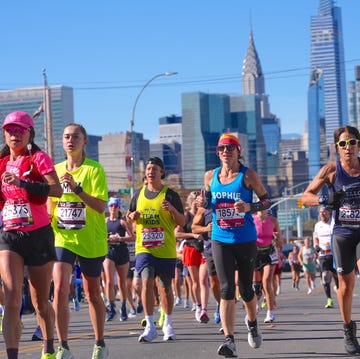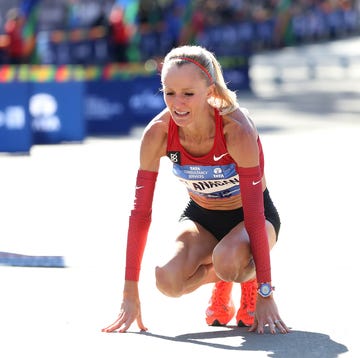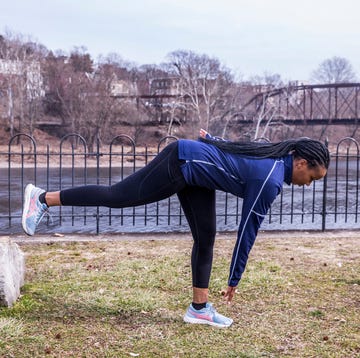Not every high school comes equipped with an indoor track. For those programs, after the final cross country meet, racing comes to an unceremonious end and the athletes, whether they like it or not, face three months off. Winter means logging slow, base-building mileage -- or picking up another sport to get through the cold months.
Many coaches see this sport diversification as a great move for young athletes. It's tempting to let a high school distance stud race three seasons and three state meets every year, and assume that the dedication and fire will be there four years later. But a winter away from running can give athletes the break they need to come back mentally and physiologically stronger for outdoor track.
Not that backing off after notching a season-best time is easy. "Everything is firing on all cylinders at the end of the cross country season if a runner has peaked correctly," says Jason Karp, doctor of exercise physiology, coach and author of 101 Developmental Concepts and Workouts for Cross Country Runners. "At that point, you've maximized every physiological benefit from VO2 max to lactate threshold to physical efficiency. You're at the top of your game. Nobody wants to lose that."
Young, highly motivated runners are the hardest to convince that rest is beneficial. Coaches, too, are often tempted to take running talent as far as it can go.
"Too many coaches get the idea that kids should specialize in sports," says Erik Belby, head coach of the Pleasant Valley High School boys cross country team in Bettendorf, Iowa. "Over the last 18 years, I've seen a lot of kids come out as freshmen and by their senior year, they're done with running."
Belby's runners play basketball, ice hockey, swim and wrestle between seasons. In 2010, his top distance runner, Andrew Swanson, claimed the 1-mile and 2-mile title at the Class 4A Iowa state championship, despite playing football in the fall and wrestling in the winter.
"We would have loved to have had him on the cross country team," Belby says, lamenting the other state title Swanson might have earned, but even Foot Locker powerhouses have split time between sports. Stanford University's Chelsey Sveinsson and University of Oregon's Jordan Hasay competed for their high school swim teams, as does current distance champ Luis Martinez, a senior at Cleveland High in Rio Rancho, N.M.
Olympic skier Kikkan Randall -- originally a running phenom in Alaska who earned 10 high school state titles in track and cross country -- cross-trained with cross-country skiing until she discovered her talent on skis trumped her foot speed. Joan Benoit Samuelson credits the Nordic pastime for improving her endurance.
A low-impact sport will go a long way toward helping runners maintain fitness in the offseason. But even if the physical training doesn't transfer exactly, the other sport can keep their head in the game, according to Lisa Taylor, girls head cross country and track coach for Traverse City Central High School in Traverse City, Mich. "Nordic skiing follows the same principles as cross country running," Taylor says. "Athletes have to pick apart segments of the race, figure out how to manage them mentally, and work on a competitive strategy."
Besides a varsity Nordic ski team, Taylor's school also offers weights and conditioning classes, which Taylor's runners use for injury prevention in the offseason to correct biomechanical weakness or muscle imbalance. More than the physiological benefits of switching things up, a winter without running can boil down to giving kids a break from their coach. With a different team comes new leadership, team dynamics, ways of looking at competition and handling stress -- a refreshing changing of the guard.
"It's good for the girls to have a break from me as their coach," Taylor says. "And if they want to run through winter, they meet up on their own two or three days a week. I don't call them, I don't check up often, because it's not time for me to add pressure. They have to decide on their own whether it's their sport. A committed runner will be dedicated without my help."
Fringe Benefits
David Van Daff, National Academy of Sports Medicine-certified personal trainer, explains what these popular alternatives can offer high school runners.
BASKETBALL
Agility
Quickness
Explosive strength
WRESTLING
Muscular strength
Dynamic functional flexibility
Mental focus
SWIMMING
Cardiovascular endurance
Increased lung capacity
Muscular endurance
STRENGTH & CONDITIONING
Power
Acceleration
Speed
DOWNHILL SKIING
Proprioception
Mental focus
Dynamic joint stabilization
NORDIC SKIING
Coordination
Stamina
Stabilization




